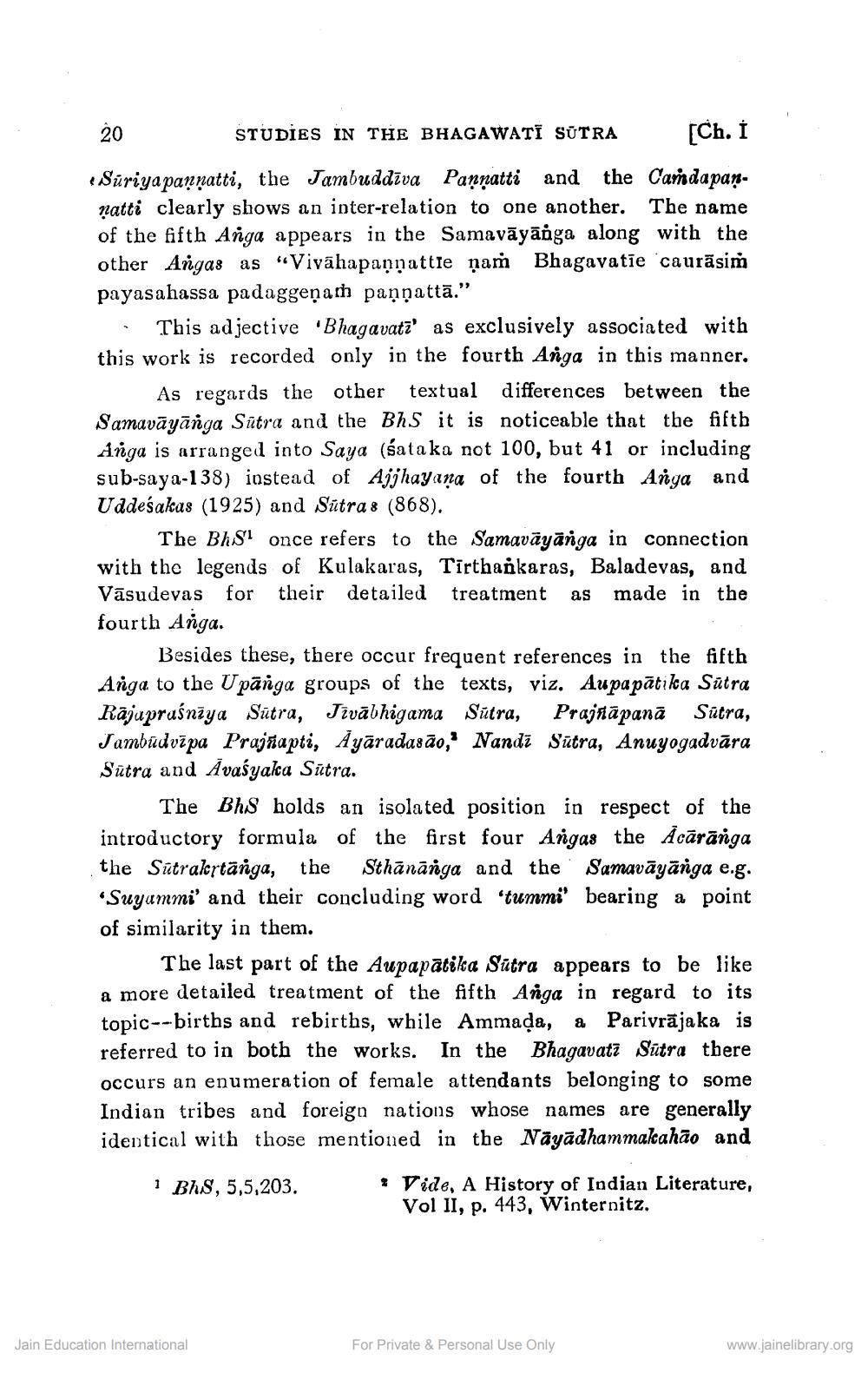________________
20
STUDIES IN THE BHAGAWATI SUTRA Suriyapannatti, the Jambuddīva Pannatti and the Candapan. natti clearly shows an inter-relation to one another. The name of the fifth Anga appears in the Samavāyānga along with the other Angas as “Vivāhapannattle ņam Bhagavatīe caurāsim payasahassa padaggeņam paņņattā."
This adjective "Bhagavatī' as exclusively associated with this work is recorded only in the fourth Anga in this manner.
As regards the other textual differences between the Samavāyānga Sutra and the Bhs it is noticeable that the fifth Anga is arranged into Saya (śataka not 100, but 41 or including sub-saya-138) instead of Ajjhayana of the fourth Anya and Uddeśakas (1925) and Sutra 8 (868).
The Bhst once refers to the Samavāyānga in connection with the legends of Kulakaras, Tīrthankaras, Baladevas, and Vāsudevas for their detailed treatment as made in the fourth Anga.
Besides these, there occur frequent references in the fifth Anga to the Upānga groups of the texts, viz. Aupapātika Sutra Rapupra naga SẼtra, Javābhagama Sutra, Prajiāpamā Sutra, Jambūdvīpa Prajnapti, Ayāradasão," Nandi Sūtra, Anuyogadvāra Sutra and Hea gaca Stra.
The Bhs holds an isolated position in respect of the introductory formula of the first four Angas the Ācārānga the Sūtrakrtānga, the Sthānānga and the Samavāyānga e.g. *Suyummi' and their concluding word 'tummi bearing a point of similarity in them.
The last part of the Aupapatika Sutra appears to be like a more detailed treatment of the fifth Anga in regard to its topic--births and rebirths, while Ammada, a Parivrājaka is referred to in both the works. In the Bhagavatı Sūtra there occurs an enumeration of female attendants belonging to some Indian tribes and foreign nations whose names are generally identical with those mentioned in the Nāyādhammakahão and
| Bhs, 5,5,203.
* Vide, A History of Indian Literature,
Vol II, p. 443, Winternitz.
Jain Education International
For Private & Personal Use Only
www.jainelibrary.org




